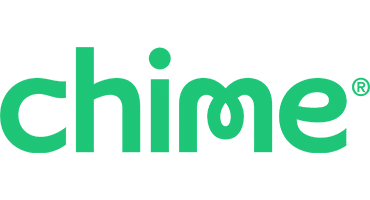.
Wunderkind Mark Zuckerberg, co-founder of Facebook, once declared that he and his colleagues would “move fast and break things.”
That phrase, which seemed to legitimize recklessness, became an informal motto at the tech giant as well as for many other aspiring entrepreneurs.
Frances Frei and Anne Morriss, cohosts of the TED podcast Fixable, are upending that mindset with a fresh mandate for businesses: move fast and fix things. They are coauthors of a new book (Move Fast & Fix Things: The Trusted Leader’s Guide to Solving Hard Problems) and are working to rehabilitate the notion of speed in running a business.
Frei teaches at Harvard Business School. As an officer at Uber, she helped the company navigate its crisis in leadership and culture. Morriss is an entrepreneur, leadership coach, and founder of the Leadership Consortium.
Frei and Morriss encourage people to be impatient with progress. At first blush, that notion seems counterintuitive.
Morriss explains: “When you’re moving fast and fixing things, measurable outcomes are better—creativity, innovation, achievement,” she says. “But the real tell is the emotional state of your stakeholders. Employees are confident, focused, and energized. Customers are sticking around and co-producing great products and services. Suppliers are eager to be a part of what you’re building. Impatience gets a bad name, but we define it as taking full, even radical responsibility for each other’s success.”
So, what are the advantages of solving problems at an accelerated pace?
“You actually get to solve them,” Frei says. “No one has ever said to us, ‘I wish I had taken longer and done less.’ What we do hear, again and again, is the opposite, the recognition that I waited too long and the moment to create change passed. The truth is the clock is ticking. The opportunity for change is finite. It’s not just what we do, but how fast we do it, that makes the difference between good intentions and having impact.”
For leaders who want to boost performance for both themselves and their teams, there are tell-tale signs of stalled performance.
“We start with trust and speed,” Frei says. “Some clear signs that you’re in trouble on trust is high churn of talented people, disengaged managers, and a transactional culture. You’re in trouble on speed when process is valued more than outcomes. If you’re spending most of your time in meetings—with agendas that are suspiciously similar to previous meetings—then you’re moving too slowly.”
Fix Map
Both trust and speed are key ingredients in the success of most enterprises. In their initial work with clients, Frei and Morriss use a “Fix Map” to assess an organization’s current situation.
“The work we do that gets the most attention is our partnership with companies in Reckless Disruption,” Morriss says. “These are companies that are moving fast but inflicting too much collateral damage as they go. But most companies are in Responsible Stewardship, building trust without also realizing their full potential for impact and innovation. Their challenge is to use the trust they’ve built as a foundation to move faster.”
Trust Triangle
Frei and Morriss point to authenticity, empathy, and logic as the essential drivers of trust in an organization. Frei offers an example of how each one of the three contributes to a high-trust culture.
“An organization with high logic can reliably meet the needs of its stakeholders. Think FedEx delivering your package versus our underfunded US Postal Service. An organization with high empathy reveals that it cares about you. Think about any company with a devoted following—Wegmans or Shake Shack or Chobani yogurt. They’ve made it clear to their customers how much they matter to them. Finally, an organization with high authenticity does what it says it will do. Patagonia has made a clear commitment to the environment, not just in its words but in its bold actions. Companies that are trusted deliver on all three—authenticity, empathy, and logic—at the same time. And, perhaps most important, when one of these drivers gets wobbly, company leaders move quickly to steady it.”
Many leaders seem to get lost in the weeds while chasing the wrong issues. Morriss explains what gets in the way of identifying the problems that should be addressed.
“The main barrier we see is the absence of curiosity, which typically presents as over-confidence in our own judgment and perspective,” she says. “When something isn’t working, we advise leaders to assume they don’t yet know what the real problem is and aren’t getting all the information they need. As leaders, we get seduced into thinking that our job is to say the right things, but it’s really to ask the right questions.”
Morriss suggests the keys to repairing and rebuilding trust when it’s become fragile.
“First, own it,” she says. “Acknowledge the cost to the business and its stakeholders. Then move quickly to figure out which of your three trust drivers is in trouble because the remedies are very different. You can’t solve a logic wobble by doubling down on empathy, which is what we often see happening with breakdowns in employee trust. Employees want fair compensation and a path to advancement. They want their core needs met by their employer, and some companies respond by saying, ‘We value you so much, let us show you by putting great snacks in the break room.’”
.
There’s no doubt that empowering people is critical to moving fast. Frei offers an example of a company that’s getting this right.
“Tech companies are good examples because the speed of technology innovation has changed all of our lives at a dizzying pace. For example, one reason Microsoft is winning right now is because CEO Satya Nadella and his team—particularly his Chief People Officer, Kathleen Hogan—invested in building a culture of empowerment and belonging, not just for some of their people, but for every single employee who walked through the door.”
Frei and Morriss point to Southwest Airlines as a successful company that “dared to be bad.” Frei explains the lessons that leaders can take from Southwest’s example.
“Southwest delivered best-in-class prices by choosing to be worst-in-class on other aspects of the flying experience,” she says. “By denying passengers some in-flight amenities like meals and assigned seats, Southwest could turn their planes around faster at the gate, which ultimately meant that it could charge lower prices. The airline was bad in the service of being great. The lesson for leaders is that physics applies to you, too. You can try to be great at everything you do, but it’s not going to work, and it’s going to leave your organization in a state of exhausted mediocrity.”
Again, some of this may seem counterintuitive. After all, Morriss says, doesn’t history teach us that progress takes time?
“Yes, progress takes time,” she says. “But change can be measured in the minutes, hours, and days it takes to identify a problem and start the flywheel of action that leads to a solution. If you look closely, even history lurches forward when changemakers decide that the moment that matters most is now.”
Credit: Source link











